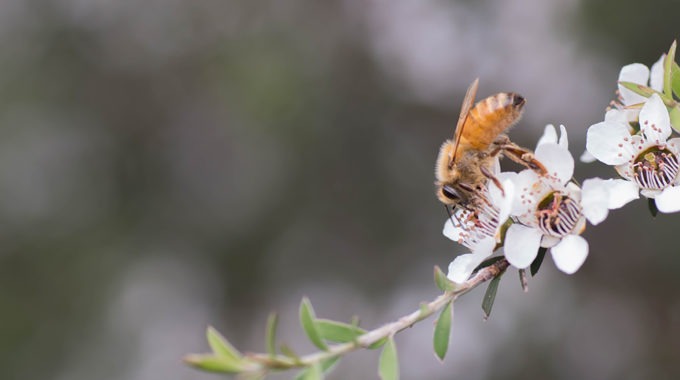How to build a bee-friendly garden
Almost two-thirds of Australia’s agricultural production benefits from honey bee pollination. Without bees, many of the foods we take for granted – from fruits and nuts to vegetables and broadacre crops – would no longer be available. We speak to an expert to find out how urban dwellers can provide a more bee-friendly environment in their gardens and on their balconies, giving our littlest livestock more of a fighting chance.
The Wheen Bee Foundation is Australia’s only registered not-for-profit charity that promotes awareness of the importance of bees for food security and raises funds for research that addresses the national and global threats to bees. According to Dr Anna Carrucan, Wheen Bee Project Manager, there are more than 2000 species of native bees in Australia, as well as the introduced – and probably best known – European honey bee.
“Native bees and honey bees, as well as other insect pollinators, all face challenges to find places to live, places to breed and food to eat,” she says. “Urban development and removal of vegetation have reduced habitat for native bees and insects.”
Bees also face threats from the use of insecticides, fungicides and herbicides, which can either kill them outright or negatively impact their gut-health or neurological function. In our cities and suburbs, garden trends that promote the use of plant types for shape and foliage may not provide sufficient flowers for bees’ food needs or places for them to live, and removing weeds that bees rely on for pollen and nectar also limits their food supply.

How to create your own bee-friendly garden
Australia is a large continent, and has several climatic zones – from dry and arid to temperate, tropical and wet. This means not all bee-friendly plants can be grown in all regions, so Dr Carrucan suggests you take the opportunity to observe what plants flourish in your neighbourhood, and notice which of those plants are most often visited by bees.
“You will soon discover a selection of potential plants to include in your garden,” she says.
The Wheen Bee Foundation has also published several bioregional Powerful Pollinators guides to provide an informative resource to help people select the best native and ornamental plants for their region, as well as food and vegetable crops for bees. Additional guides will be coming soon, so have a look to see if your local landscape is listed online.

Bee-friendly flowers
“There are many common and easy-to-grow bee-friendly flowers that people can plant in their garden to attract pollinators and provide year-round forage for native bees and honey bees,” Dr Carrucan says. “Garden centres often sell ornamental flowers, herbs and vegetables that bees find attractive for pollen and nectar.”
Native plant nurseries are a great place to visit for a range of pollinator-friendly plants that are indigenous to your local area and provide important habitat for native pollinators.
“Plants that are easy to grow and favoured by pollinators include many herbs and ornamental flowers,” Dr Carrucan advises. “Especially those in the daisy family [such as native daisies and sunflowers], the mint family [mint, lavender and sage] and the carrot family [fennel, parsley and carrots].”
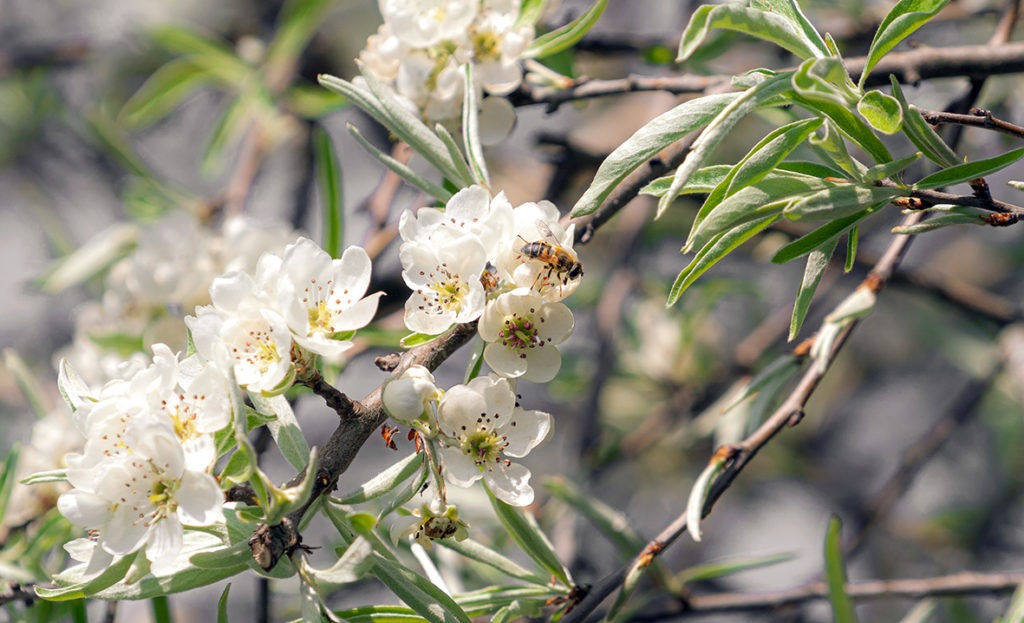
What about trees?
“Trees can provide a great abundance of pollen and nectar forage for bees, due to their larger size,” Dr Carrucan says. “Eucalyptus trees, such as the dwarf sugar gum and other smaller varieties are often suitable for an urban garden and provide abundant nectar.”
Other trees such as olive trees are also a great source of pollen for bees, as are fruit trees when they blossom in winter and spring.
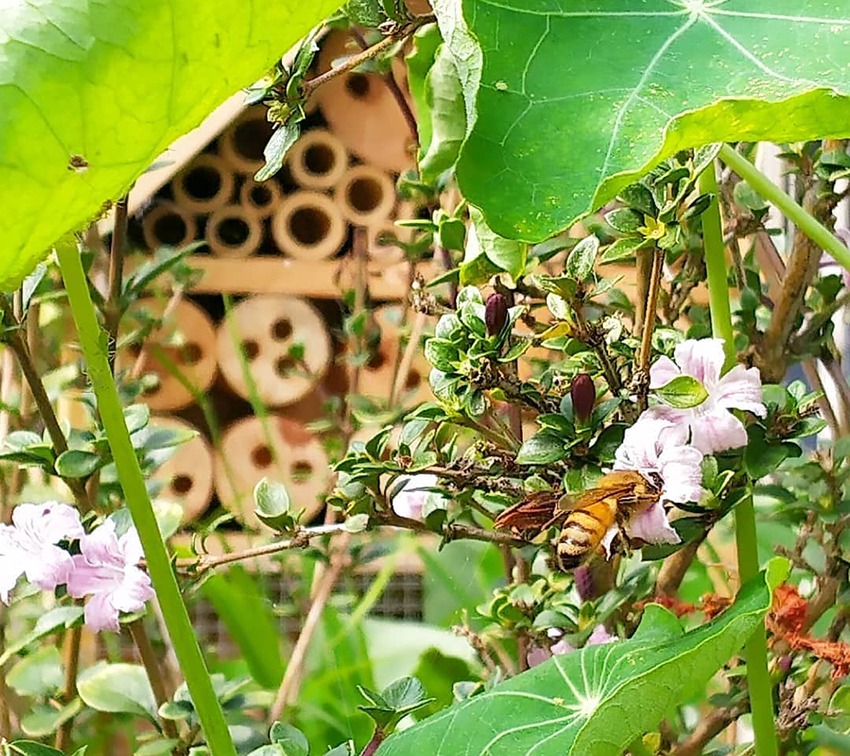
Variety is key
Planting a range of species that appeal to honey bees and native bees alike is the best way to help ensure secure and sustained habitat and food sources for as many bees as possible. Dr Carrucan suggests you include a range of “life-forms” such as trees, shrubs, herbs and groundcovers; as well as different flower colours and flower shapes.
“Different species of bees have specialised mouthparts to access nectar in certain types of flowers, such as tubular flowers,” she says
Choosing seasonal flowers that blossom at different times throughout the year can also help to maintain a year-round source of bee food and habitat.
“Selecting a range of species that flower at different times of the year ensures bees visiting your garden always have a reliable supply of pollen and nectar,” Dr Carrucan says.
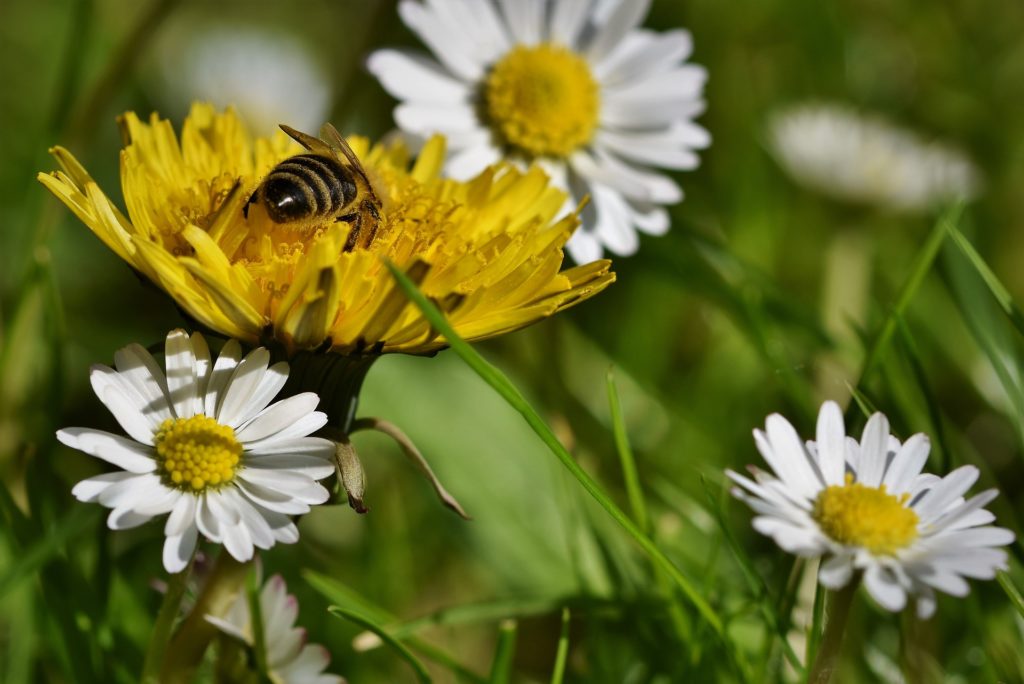
What about weeds?
“Weeds are simply a plant growing in the ‘wrong’ place,” Dr Carrucan says. “In an urban or home-garden setting, many plants that we consider weeds are great bee food. Dandelions, capeweed, clover and self-sown plants such as parsley or marigolds are a feast for bees.”
Consider transforming your lawn into a beautiful wildflower meadow, with the addition of colourful bee-friendly flowers that are easy to grow. Poppies, native daisies and other ornamental wildflowers look amazing and are adored by bees.
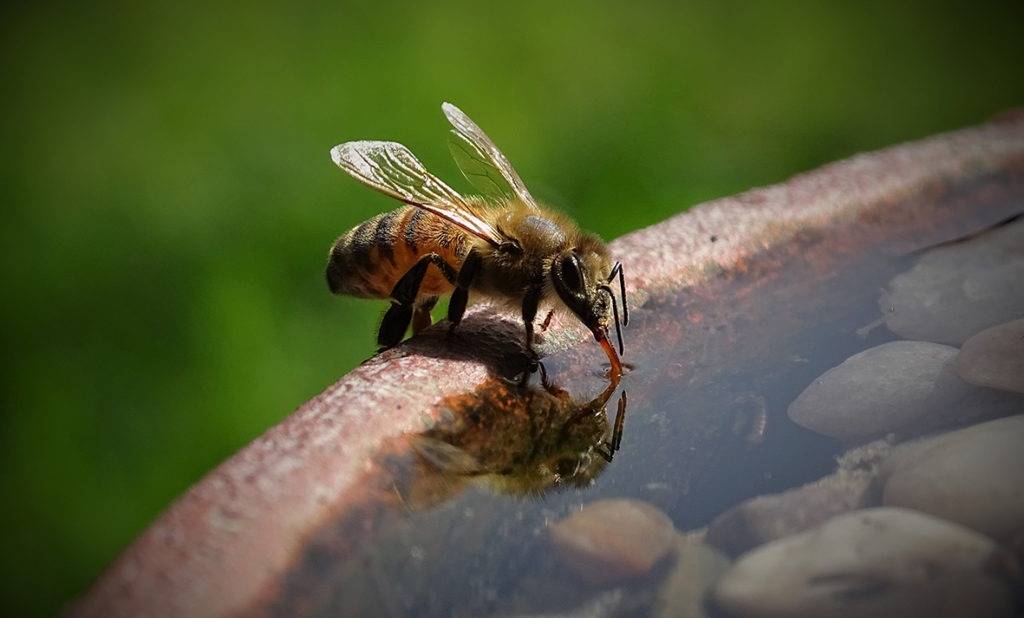
Bees need water, too
A bee-friendly garden also needs a safe, accessible water source. But an important point to note is that bees can’t swim, so make sure you provide a shallow dish with secure places for the bees to land as they arrive at their water station.
“Stones in a bird-bath are a great idea, as is a plastic tub with a giant car-wash sponge in it, filled with water so the bees can land on the sponge and sip water from its surface,” Dr Carrucan suggests. “Bees also appreciate a nutrient boost from a water source where leaves and bark settle and dissolve tannins and essential minerals into the water. The water should be clean, but have the appearance of a strong cup of tea.”
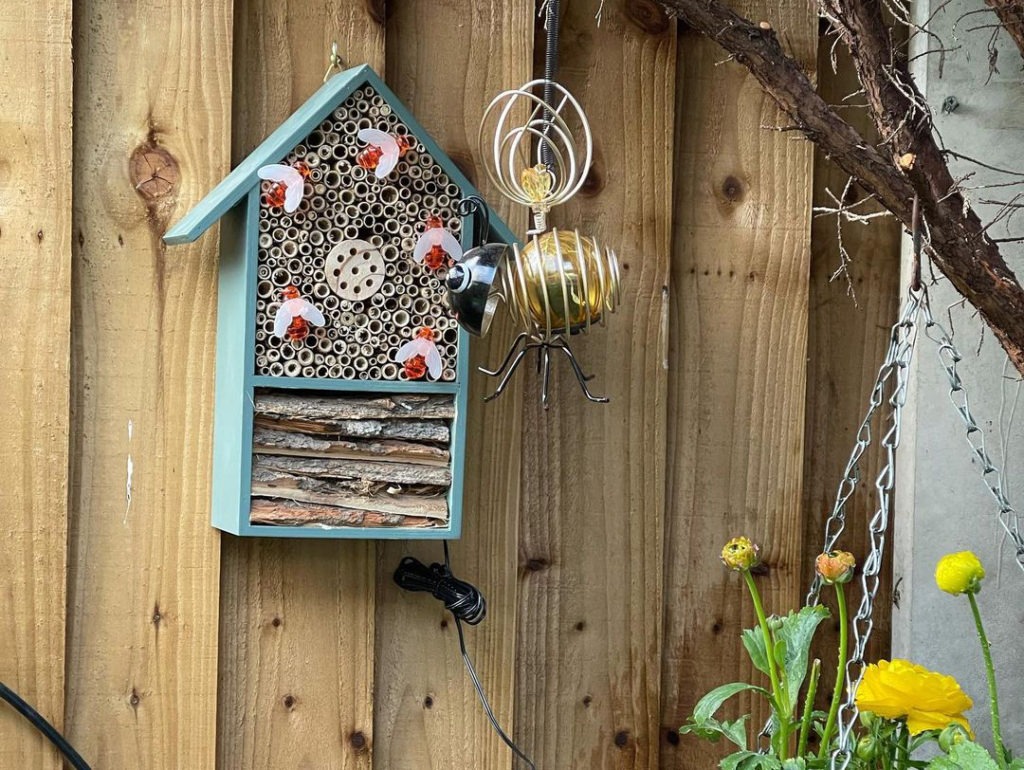
Welcome to the bee hotel
Bees also need safe spaces to live, nest and breed. Many of our native bees are mostly solitary, which means they don’t live in big hives. Enhancing your garden by providing areas for these bees to nest and breed will ensure your bee-friendly garden is also a safe haven.
“A great project for the home garden is to construct ‘bee hotels’ to add some bee real estate to your backyard,” Dr Carrucan says. “Different species of native bees in your area will have preferences for specific shapes and sizes of hollows and crevices.”
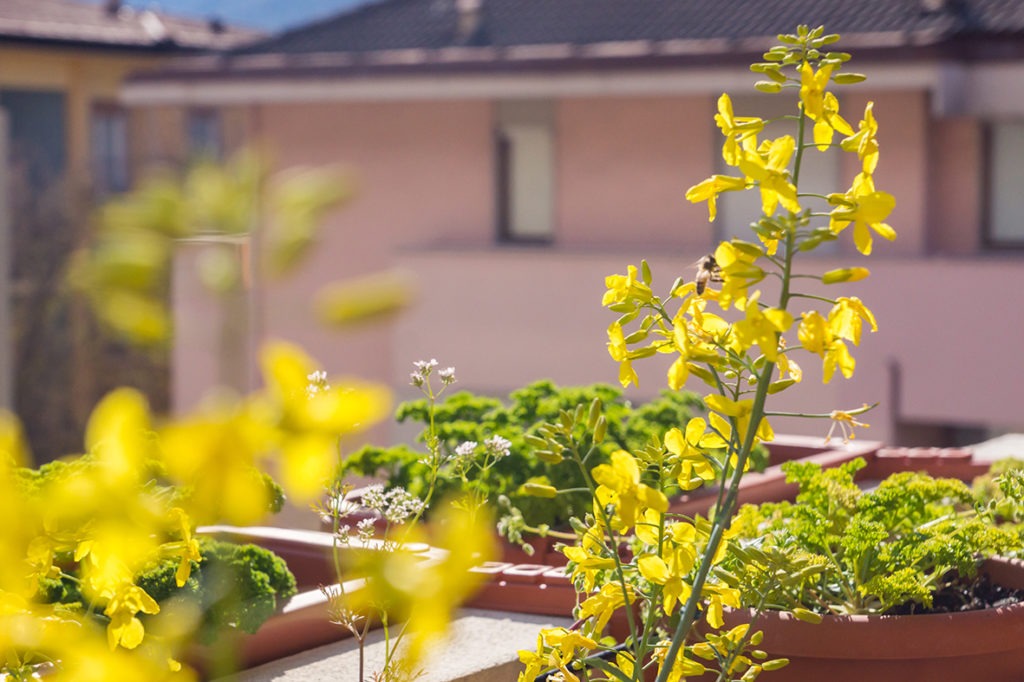
What if I don’t have a garden?
If you have a balcony, you can still create a haven for bees. Bring pots and planters to life with a mix of tall and small flowers, as well as herbs and vegetables.
“Create more space for your urban balcony bee garden by installing a trellis and training climbing plants up lattice and along wires to really enhance the oasis,” Dr Carrucan says. “Shelter from the wind helps bees to forage successfully, so creating a wind-break along the balcony railing can help insects to navigate the abundance of flowers that you provide.”
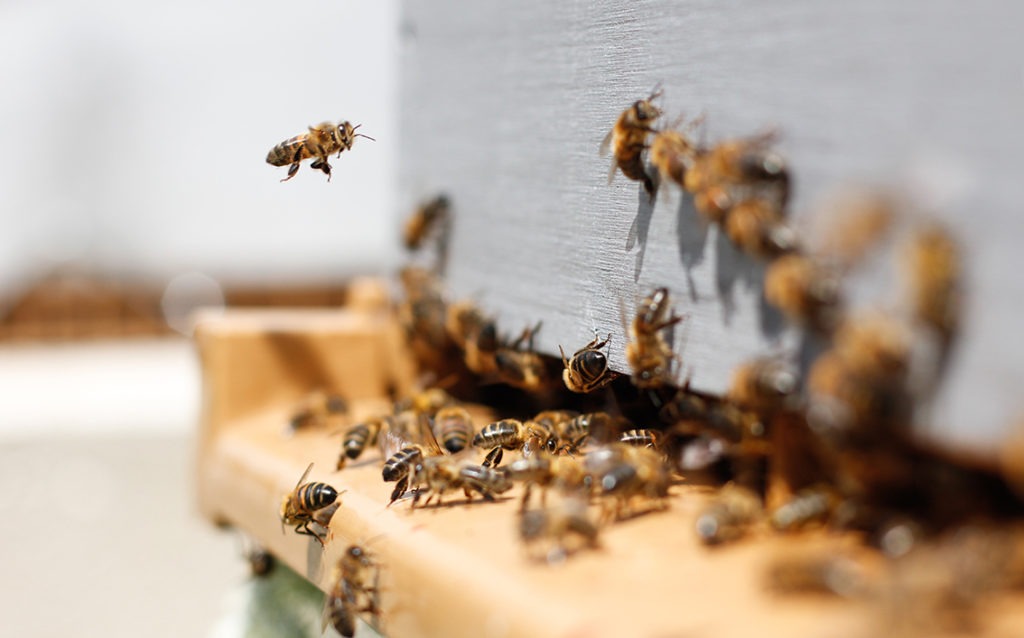
Other ways that you can help
Australians living in urban areas can do so much to help our pollinators, even in a small yard, balcony or rooftop. But the fundamental actions – providing food for bees to eat, providing water to drink and providing a place to live – are just the beginning.
“Enhance your bee haven by limiting or eliminating the use of chemicals that are harmful to insects,” Dr Carrucan says. “Even some organic sprays can be harmful to bees.
“You can also show your support for others who are managing their gardens and farms in ways that support our honey bees, native bees and other insects. Buy your fruit and vegetables from local growers who care for bees, and find local honey producers who manage their hives in an ethical and sustainable way.
“Make them your first choice for buying honey, and above all, encourage others to do the same, so we can all enjoy a wonderful world buzzing with bees.”
To find out more about our bee populations and how you can help to protect them, head to wheenbeefoundation.org.au. The Wheen Bee Foundation is proudly supported by Burt’s Bees, so you can also help our bees by purchasing a limited edition Burt’s Bees Bring Back the Bees lip balm. You can also download Bee Friendly: a free planting guide for European honeybees and Australian native pollinators, thanks to AgriFutures Australia.


